[vc_row][vc_column][vc_column_text]
4 Ways to Learn Wetland Delineation
Here is what is coming up next!
[tribe_events]
Do you have a group to train? Contact us HERE about our customized private training.
[/vc_column_text][/vc_column][/vc_row]
[vc_row][vc_column][vc_column_text]
[tribe_events]
[/vc_column_text][/vc_column][/vc_row]

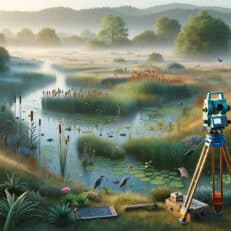

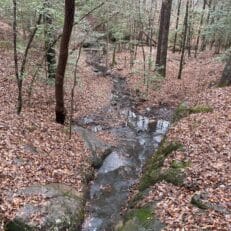
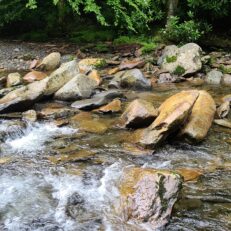

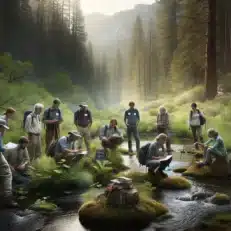

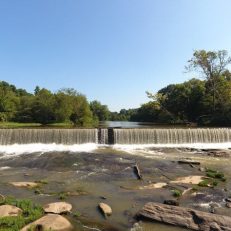







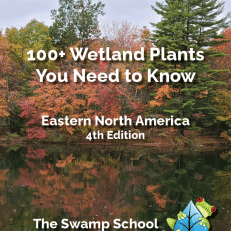

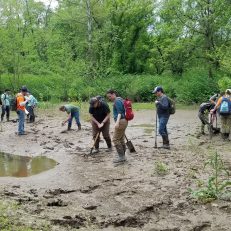

Microplastics, tiny fragments of plastic less than 5 millimeters (about 0.2 in) in size, have become a growing topic of conversation in recent years. Since 1950, about 8 million tons of plastic have been produced, but only about 10% of that has been reused and recycled. The rest of that plastic has found its way to landfills, the ocean, and roadsides, to name a few. Primary microplastics are plastic materials designed to be small in order to perform a specific function. Think about the exfoliating beads you see in face cleansers, or the grittiness you can sometimes feel in your toothpaste. Secondary microplastics come from the breakdown of larger plastic materials: water bottles and storage tubs are good examples. Through wear and tear, the effects of the sun, wind, and water, larger plastic items break down into tiny pieces. Most plastics that have been produced take thousands of years to fully decompose; so in the meantime, those tiny plastic pieces end up in the air we breathe, the water we drink, the food we eat, and the soil beneath our feet.
Most microplastic studies have focused on the ocean. How do microplastics affect marine life, and in turn, how would that consequence affect us? Research has shown that microplastics are often absorbed and ingested by sea creatures, and if they survive having the plastic inside of them, and do not become ill or die from the toxins that might have come along with the plastic pieces, then those toxins and fragments stay within the animal. When that animal is eaten, the plastic moves up a notch in the food chain; the amounts of microplastic present within a creature’s tissues increase the further up the food chain you go. Microplastics have been found in people, and studies have found microplastics in our food, honey, and sugar. They are everywhere, and a recent study published in the Science of the Total Environment journal in January of this year revealed that microplastics had been found in soil samples collected more than seven meters (23 feet) below the surface. The samples had originally been collected as part of an archaeological excavation in the 1980s, and, until now, the samples were thought to be from stratigraphic layers untouched by human activity.
The authors of the study caution that their research is in the early stages, but for archaeologists, this development might result in seismic changes to the field. Preserving prehistoric and historic resources in situ, that is, in their original state, as opposed to digging them up or moving them elsewhere saves time and resources. The idea is that being encased deep within the earth will preserve the resource for a long time, but this research presents the distressing notion that microplastics have been contaminating archaeological sites for decades. Why are microplastics a problem in soils? Not only are they ingested by soil-dwelling animals and absorbed by vegetation, but the presence of microplastics can alter the chemical and physical composition of the soils and sediments themselves. As a result, sites, features, artifacts, and remains buried underground may deteriorate more rapidly, and the chemicals released from the microplastics as they decay could potentially compromise radiocarbon dating and trace element analyses.

The researchers emphasize that soil is often not studied holistically as a complex ecosystem. Archaeology as a field tends to view soils and sediments solely as the casings surrounding the good stuff, and not as an entity that acts on and is acted upon by the artifacts and ecofacts humans leave behind. In order to fully understand how the presence of microplastics will affect preservation, more research must be performed on soil as an ecosystem, taking into account its physical, chemical, and biological components together. Soils are unique in that they can change from one kind to another, if the environmental factors change. Studies on microplastics in our oceans, our air, and our food are important, and should continue. The consequences of microplastics in our soils, while still relatively unknown, are consequences all the same. More attention should be focused on figuring out exactly what effect those consequences will have.

North Carolina is covered in squirrels. Everywhere you look, there is a good chance you will see the Eastern Gray Squirrel, Sciurus carolinensis, one of the most familiar mammals in our state. If you are in or around Brevard, North Carolina, you might see the white variant of the gray squirrel. These all-white or mostly all-white individuals are not albinos, but that does not stop the citizens of Brevard from celebrating White Squirrel Weekend every year. Approximately one-third of the gray squirrel population in their city consists of the white variant, and Brevard is a designated squirrel sanctuary. If you are in the far western tip of the state, the sandhills, or the southeastern coastal plain, you probably will not find white gray squirrels, but you will find Fox Squirrels, Sciurus niger, which are the largest tree squirrels in North America. In the mountains of our state, you may happen upon the Red Squirrel, Tamiasciurus hudsonicus, though there are reports of an isolated population of red squirrels in the Winston-Salem and Greensboro area. Those three species are the squirrels that people see every day, but there are two more species of squirrel in our state that many people never see: the Southern Flying Squirrel and the Northern Flying Squirrel.

Southern Flying Squirrel, Glaucomys volans. Photo courtesy of Riverwatch and the Tennessee Aquarium.
The Southern Flying Squirrel, Glaucomys volans, is the smallest squirrel in our state, weighing up to 100 grams (about 3.53 oz). They are found throughout the Carolinas, except on coastal barrier islands, but, as they are nocturnal, most people never see them. Southern Flying Squirrels do not actually fly like bats or birds: rather, they glide using membranes formed from loose, furred skin extending from their wrists to their ankles. When their arms and legs are fully outstretched, the membranes form a winglike apparatus that is great for gliding from tree to tree. How is that for weird and wonderful? Southern Flying Squirrels use their tails as rudders, and they glide from positions higher in a tree to points further down. They can run, hop, and leap like the other squirrel species, and the best time to see them is by the light of a full moon during a warm summer night. These animals nest in tree cavities, often competing for nesting sites with woodpecker species. This can be a problem for the red-cockaded woodpecker, an endangered bird within our state. Southern Flying Squirrels occupy the same natural spaces as gray and fox squirrels, and, due to their abundance and more aggressive behavior, may be outcompeting the Northern Flying Squirrel.
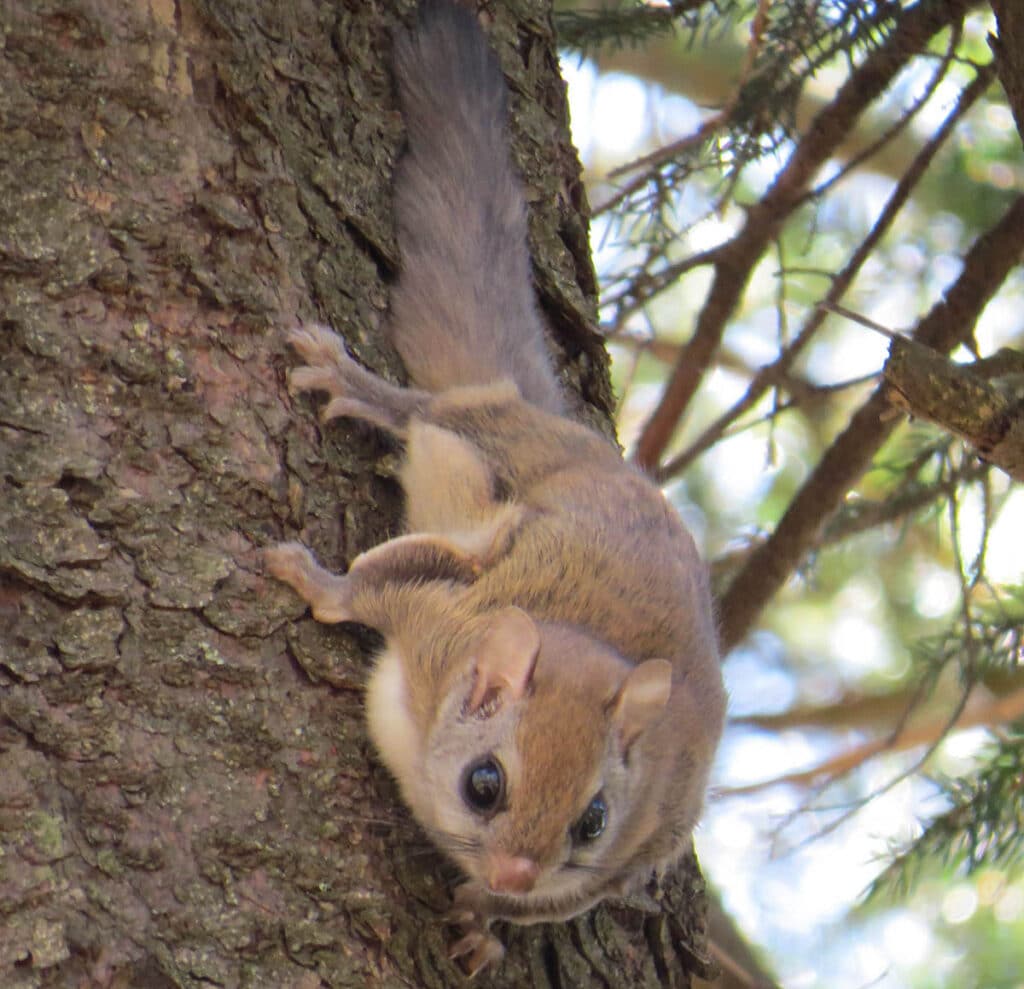
Carolina Northern Flying Squirrel, Glaucomys sabrinus coloratus. Photo courtesy of Clifton Avery and the NC Wildlife Resources Commission
Northern Flying Squirrels, Glaucomys sabrinus, are larger in size and more richly colored than the southern species. Northern Flying Squirrels tend to have darker brown colored fur on their backs and belly hairs that are gray at the base, not all-white like the belly hairs of the Southern Flying Squirrels. This species is far less common, occurring along the peaks of the Appalachian Mountains, in the Bald Knob area near Mount Mitchell, and in a few locales in the Great Smoky Mountains. In actuality, the Northern Flying Squirrels that we have in North Carolina are a very rare subspecies: Glaucomys sabrinus coloratus, the Carolina Northern Flying Squirrel. A federally listed endangered species, these animals also have a membrane of loose, furred skin that is used as a gliding mechanism. Due to their rarity, far less is known about the Carolina Northern Flying Squirrel, but their natural history appears to be quite similar to that of the Southern Flying Squirrel. They nest in tree cavities and consume many of the same foods, though they have a penchant for lichens and fungi, and do not rely on seeds as much as the southern species. Nocturnal, they are most active just after dusk and right before dawn.
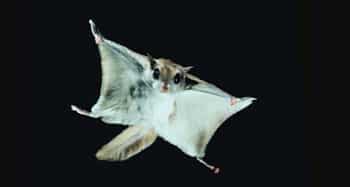
Southern Flying Squirrel mid-glide. Photo courtesy of Dave Maslowski, NC Wildlife Resources Commission, and NCPedia.org
Witnessing a flying squirrel glide through a forest is a sight to behold, and we are fortunate in North Carolina to have two species. Habitat loss is the main threat to their survival, especially for the Carolina Northern Flying Squirrel. This is unfortunate, because without the flying squirrels, these wooded areas might not have ever existed in the first place. Through foraging for and caching away seeds, nuts, and fungi, flying squirrels end up spreading those species around. This becomes vital when tree growth and health is examined more closely. Tree roots form a symbiotic relationship with fungi, where the fungi get sugars from the tree, and the tree is able to better absorb nutrients in the soil with help from the fungi. Without the fungi, the trees would not grow and thrive, so without the aid of flying squirrels, our forests would look a lot different. Even if you never get to see one in the wild, these weird, wonderful, and quite frankly adorable squirrels are notable members of the ecosystem and will hopefully be frolicking and gliding in North Carolina well into the future.
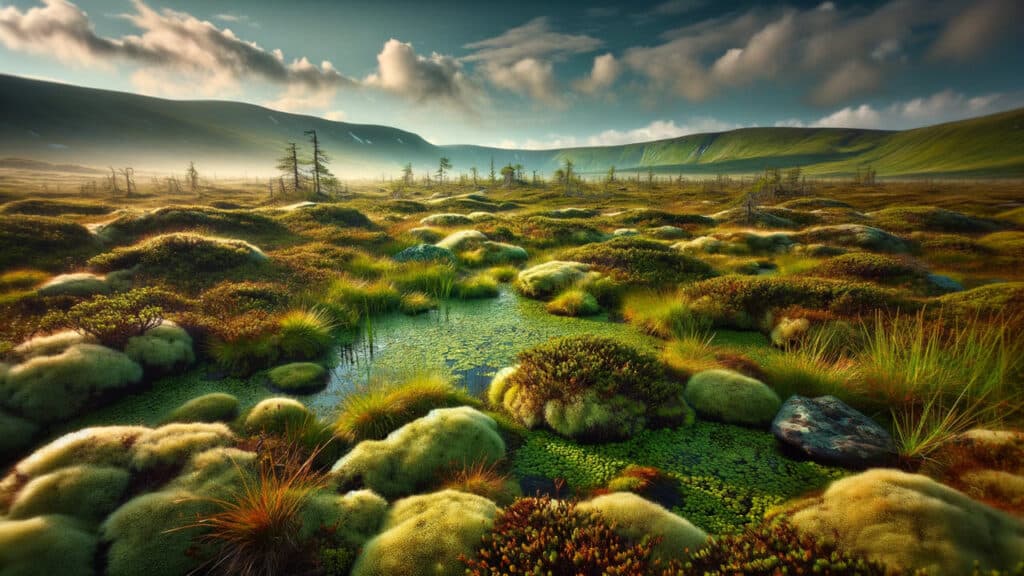
The following blog is a shorter version of the article Analysis: Millions of acres of NC wetlands can be developed due to SCOTUS, NC law by Adam Wagner, published in the Raleigh News & Observer on April 1, 2024. To read the full article, click here.
A large portion of North Carolina’s wetlands could lose protections due to the dual impact of a Supreme Court decision and a state law. When North Carolina lawmakers passed a provision in last year’s Farm Act that prevented development only in wetlands protected by the federal government, they couldn’t answer a key question: How many acres of wetlands here would lose protection? For North Carolina, the answers range from bad to worse, with the analysis determining that anywhere between 14% and 100% of the state’s non-coastal wetlands could be open to development. Those wetlands cover 490,000 to 3.6 million acres, many of them in the low-lying coastal plain. The wide range of risk in the analysis is due to ongoing litigation about what constitutes a federally protected wetland, said Adam Gold, an EDF manager for climate resilient coasts and wetlands in North Carolina and Virginia “The Supreme Court used really unclear language and this leaves the door wide open for potential interpretations.”
The timing of the North Carolina bill’s passage was just weeks after the U.S. Supreme Court’s 2023 Sackett V. EPA decision, a rollback of federal wetlands protections. The decision narrowed which wetlands the federal Clean Water Act protects to those continuously “adjoining” streams, oceans, rivers and lakes in the U.S. The N.C. Home Builders Association was a key force behind last year’s rule change in North Carolina, arguing that the change was introduced to prevent state environmental officials from regulating some isolated wetlands no longer protected by federal rules. North Carolina has other state and local rules that will protect many wetlands that could lose federal protections, Chris Millis, the Home Builders Association’s director of regulatory affairs, told The News & Observer. He pointed to riparian buffer rules, vegetated areas near streams; watershed protection overlays that limit development and require stormwater controls in areas that are important to drinking water supplies; and floodplain protections that curb development in flood-prone areas. Millis also pointed to a March 2024 memo from Assistant Secretary of the Army Michael Connor to the U.S. Army Corps of Engineers directing the agency to continue including wetlands that are no longer federally protected due to the Court’s decision in Corps mitigation projects. That means that even though a wetland might no longer be federally protected from development, the Corps could restrict development there. Citing reduced protections for some North Carolina wetlands, Gov. Roy Cooper vetoed the 2023 Farm Act, but legislators overrode Cooper’s veto.
Wetlands are a key point of regulatory conflict, with businesses and developers arguing that protections are applied too broadly, stymieing building projects that should move forward with ease. Environmental groups say wetlands are key to a clean environment because they filter pollutants out of water and protect against flooding. An acre of wetlands can hold between a million and 1.5 million gallons of water, according to the EPA. That’s particularly important in isolated wetlands found in the Piedmont or North Carolina mountains, Gold said. By retaining water, he said, those wetlands reduce the amount of floodwater flowing downstream, helping everyone in the stream or river basin below. “The wetlands that are most at risk after this decision are the ones that are most critical for flood storage because they are towards the headwaters of watersheds,” Gold said.
Another concern environmental lawyers have about the Farm Act is that it goes further to roll back protections than previous rollbacks, which were primarily focused on permitting the filling in of certain wetlands for development activity. Those wetlands are now no longer protected by state rules limiting the discharge of pollutants into water. With the new information in hand, environmental advocates hope to start making the case for additional wetlands protections when lawmakers return for the short session next month. David Kelly, EDF’s North Carolina president, wrote in an email that lawmakers either have to find a way to convince developers to avoid the losses of wetlands or significantly ramp up funding for wetlands conservation and restoration. “We believe it’s important that science helps inform the policy discussion on wetland conservation in North Carolina and beyond, with the consequences of the Sackett decision providing a clear example of the kind broad ambiguity and uncertainty that can result when policy making is not rooted firmly in science,” Kelly wrote. “We stand ready; if there are any areas of environmental concern that are affected, we’re open-minded and we’re not trying to develop in areas that are truly wetlands,” Millis said.